The supply chain of Chick-fil-A is an integral part of the company’s day-to-day operation; through it, the over 2,900 restaurants of the brand get the supply of ingredients and other items that they need to serve customers.
Chick-fil-A began in 1967 when Truett S. Cathy opened a chicken-based quick service restaurant (QSR) in the food court of the Greenbriar Shopping Center in Atlanta.
Since then, the brand has expanded its operations to other cities in the United States and has grown internationally to countries such as Puerto Rico and Canada. Chick-fil-A’s expansion has equally broadened its customer base.
Chick-fil-A’s management structure, its highly effective marketing strategies, and customer-centric operations have contributed greatly to the continued profitability of the company.
Currently, in 2023, the company employs over 170,000 individuals cutting across its restaurants, corporate office, and supply chain. Within the United States, Chick-fil-A has been recognized as the largest quick-service chicken restaurant chain based on annual system-wide sales.
This has been possible due to several factors, the major one being that the brand has been America’s favorite fast-food chain for nine consecutive years since 2004. Thus, the brand records the highest same-store sales compared to other QSRs.
See also: Lululemon Supply Chain Issues and Strategies
What is supply chain?
A supply chain refers to the network of corporate organizations and individuals who are involved in aggregating resources, utilizing technology, and carrying out all the necessary activities that are integral to the creation of a product or service and its subsequent sale to the target consumer.
Simply put, the supply chain of any entity includes all the steps involved in bringing a product or service from the producer to the consumer. This typically begins right from the product or service ideation to its being sold in the market.
For Chick-fil-A, aside its supply chain team, the company also has a dedicated subsidiary, Chick-fil-A Supply, LLC, which handles several aspects of the brand’s supply chain process including warehousing, distribution, and operational support for restaurants. Hence, the brand is considered one of the companies with vertical integration.
The aim of Chick-fil-A Supply is to understand and meet the unique needs of the restaurant. By ensuring the seamless operation of Chick-fil-A’s supply chain, they ensure all the brand’s restaurants have the necessary ingredients and items they need to serve their customers good food.
See also: Tesco Supply Chain Process and Issues
Chick-fil-A supply chain process
- Sourcing of ingredients and items
- Chick-fil-a distribution centers
- Distribution and logistics
- Operational support
- Chick-fil-A restaurants
The various steps required in the supply chain of Chick-fil-A is handled by the brand’s subsidiary, Chick-fil-A Supply which was founded in 2019. This backward vertical integration move by the company has strengthened its position as the top chicken-based fast food chain in America.
Before this unique vertical integration move, the brand worked with a network of suppliers, distributors, and logistics partners who worked closely with the company’s supply chain team.
Sourcing of ingredients and items
In order to serve its millions of consumers freshly prepared food daily, Chick-fil-A works with a diverse network of ingredient producers such as crop farmers, poultry keepers, and food processing facilities.
The sourcing of ingredients and other items such as packaging and cutlery is the first step in the supply chain of Chick-fil-A. This is done with the philosophy; “Food is essential to life, therefore make it good” in mind as they engage suppliers.
Chick-fil-A has set several policies and initiatives in place aimed at ensuring that it sources the best ingredients for the various menu items sold at its restaurants.
For instance, the brand ensures that its food suppliers follow rigid quality and safety standards such as the Global Food Safety Initiative (GFSI) certification standards. They do this by taking a hands-on approach to supplier verification which is carried out by the brand’s supply chain team or through ongoing third-party inspections.
Aside from these, the brand also maintains long-term relationships with most of its suppliers; this ensures that most of the brand’s suppliers are conversant with the standard requirement of the brand for the ingredients and items they purchase from these suppliers.
One example of a long-term supplier relationship can be seen with the company, T. Marzetti. The brand makes some of the special sauces and dressings from custom Chick-fil-A recipes and specifically brands them for the QSR.
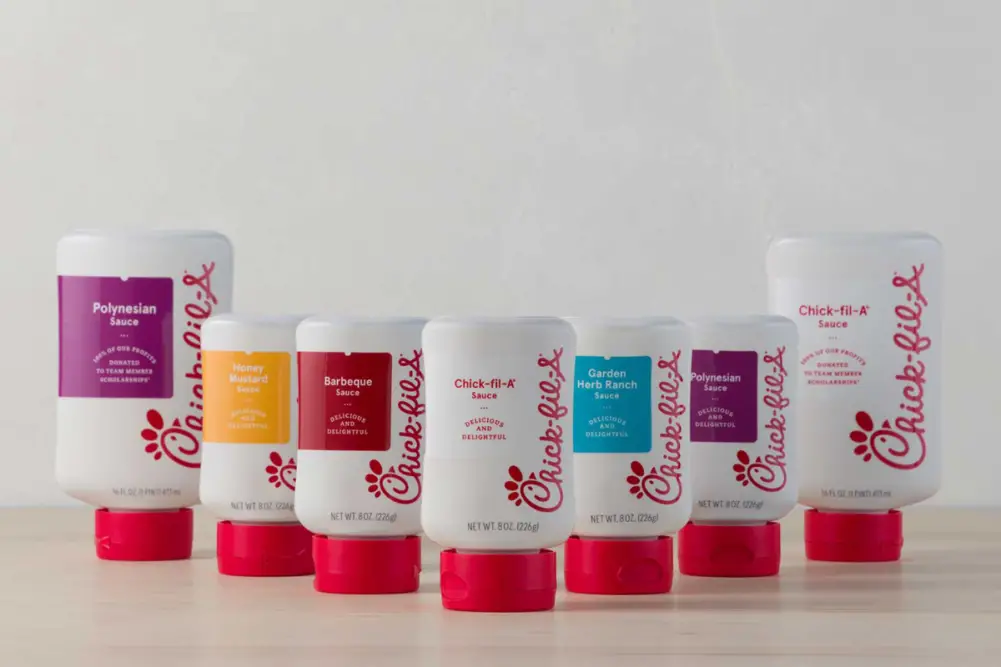
Chick-fil-a suppliers
Chick-fil-A works with a network of suppliers for different products. The brand gets daily supplies of fresh ingredients such as kale, lettuce, carrots, tomatoes, apples, blueberries, broccolini, and cabbage from farms and fresh produce suppliers who are based in Arizona, California, Washington, or Western New York.
The location where the fresh produce is sourced changes based on the season and the proximity to restaurants. For instance, most Chick-fil-A restaurants in the eastern half of the United States get their supply of chopped apples from farms in western New York whereas restaurants in the the western half of the United States get theirs from farms in Cashmere, Washington.
Below is a list of some of the suppliers in Chick-fil-A’s supply chain.
| Company name | Item supplied |
|---|---|
| Lamb Weston | Waffle Potato Fries and Hash Browns |
| Thrive Farmers | Coffee |
| Bay Center Foods | Lemon juice |
| Fair Oaks Farms | Greek yogurt parfait |
| Kraft Heinz | Ketchup |
| T. Marzetti | Sauces and dressings |
| Tyson Foods | Poultry |
| BoltGroup | Packaging |
| Coca-Cola | Soft drinks |
| Puerto Rico Coffee Roasters | Coffee |
| Wayne Farms | Chicken |
| Duke’s Mayonnaise | Mayonnaise |
| Sunkist | Lemons |
| J.R. Simplot Company | Waffle Potato Fries |
Chick-fil-a distribution centers
The brand currently has 5 distribution centers in its supply chain and plans on opening 5 additional ones. The distribution centers are operated under the brand’s subsidiary, Chick-fil-A Supply.
The first full-scale distribution center under this subsidiary was opened in 2020 in Cartersville, Georgia. This distribution center employs approximately 200 people and has the capacity to serve up to 300 restaurants.
The distribution center serves as an aggregating point for ingredients and other supplies that are sourced from individual farms or supply companies for onward supply to Chick-fil-A restaurants based on each restaurant’s unique requirements.
Occasionally, excess supplies are temporarily stored in the warehouse hence they handle receiving, staging, and stocking inbound supplies.
The other 4 distribution centers in the supply chain of Chick-fil-A are located in Cleveland, Ohio; Nashville, Tennessee; Mebane, North Carolina; and St. Louis, Missouri.
As Chick-fil-A continues to grow and extend its operations to additional locations within the United States and other countries, its supply chain also expands to keep up with the growing demand from its restaurants.
Starting in 2024, the brand has plans to open additional distribution centers across several locations including Lexington County, Kansas City, Charlotte, Dallas, San Anthonio, and Columbia.
Distribution and logistics
Before the establishment of Chick-fil-A Supply, the brand depended on third-party distribution and logistics companies to handle the distribution of food ingredients and other items from farmers and suppliers to its restaurants.
AmeriServe Food Distribution used to be in charge of the distribution and logistics within Chick-fil-A’s supply chain but the brand switched to using MBM Corporation in 2000. The switch was due to the capacity of the latter company to serve more restaurants due to their having a wider distribution network and logistics capabilities both within and outside the United States.
Currently, however, the brand has implemented vertical integration through Chick-fil-A Supply. According to the subsidiary, they are equipped with:
From CDL truck drivers to navigators, our transportation team plays a unique role in delivering critical ingredients and supplies to Chick‑fil‑A restaurants and ensuring everything is in its place for the team to use. Our drivers, navigators and vehicle maintenance team are charged with safely, efficiently and accurately:
Chick-fil-A Supply
- Delivering ingredients and supplies.
- Unloading and putting away product.
- Learning individual restaurant preferences and best practices to help optimize deliveries.
- Keeping our vehicles in tip-top shape.
Thus, the subsidiary now handles all matters of distribution and logistics in the brand’s supply chain. They also provide administrative support, customer service, as well as safety and quality control for the brand’s restaurants.
These ensure that the brand’s restaurants can serve their customers good-quality food and can meet the varying demands in their respective restaurants.
Chick-fil-A restaurants
Chick-fil-A restaurants are the last step in the supply chain of the brand as customers can access meals here. Right from the company’s inception, the brand has been committed to providing its patrons with quality menu options.
Hence, they implement stringent measures in sourcing their ingredients and other supplies to ensure that they exceed industry standards and provide high-quality fresh meals.
One clear instance has been the brand’s use of only chickens that have been raised without antibiotics in its menu since May 2019. Chick-fil-A sources 100% real, whole, boneless breast of chicken that has never been ground or separated, and that contains no fillers or added steroids or hormones.
Its salads and fruit cups are made from fresh vegetables and fruits supplied daily to the restaurants. The lemonade served at Chick-fil-A outlets is also made from fresh lemons as opposed to the usual concentrate that a considerable number of quick-service restaurants use.
Additionally, the team members who work at the restaurants are adequately trained to serve customers politely and efficiently such that waiting time is greatly reduced and orders are not mixed up.
Therefore, this final step in Chick-fil-A’s supply chain where consumers get to interact with the brand through its restaurants has been a major contributor to the goodwill the company enjoys in the market.
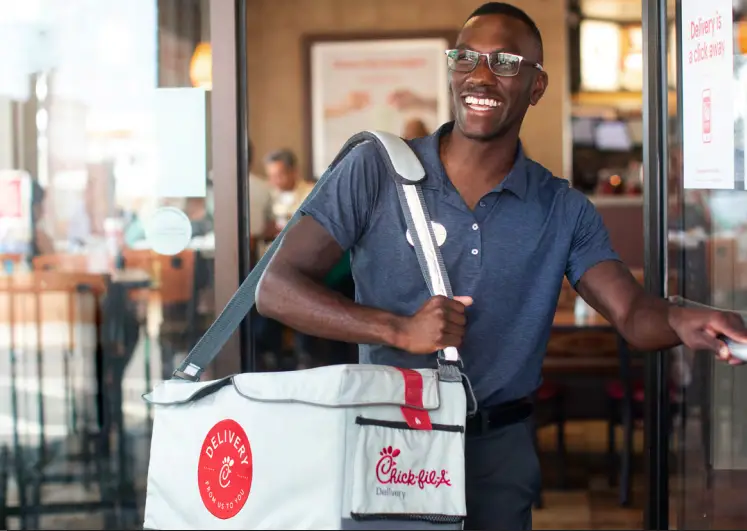
It has also been a differentiator of the brand among other restaurants that operate within the quick service industry. This is because the brand’s employees treat their customers with courtesy, respect, and kindness.
Due to the customer-centric approach of Chick-fil-A’s operations, the brand has ranked among the top brands when it comes to customer perception and satisfaction.
See also: Costco Supply Chain Issues and Management
Who supplies chick-fil-a chicken?
Chick-fil-A chickens are supplied by a network of poultry farmers and companies such as Wayne Farms and Tyson Foods.
All chicken suppliers of the brand adhere to stringent quality requirements such as raising the chickens in barns in accordance with the Animal Wellbeing Standards and not using antibiotics in feeding or treating the chickens.
See also: Home Depot Supply Chain: Issues and Process
Chick-fil-a supply chain flow chart
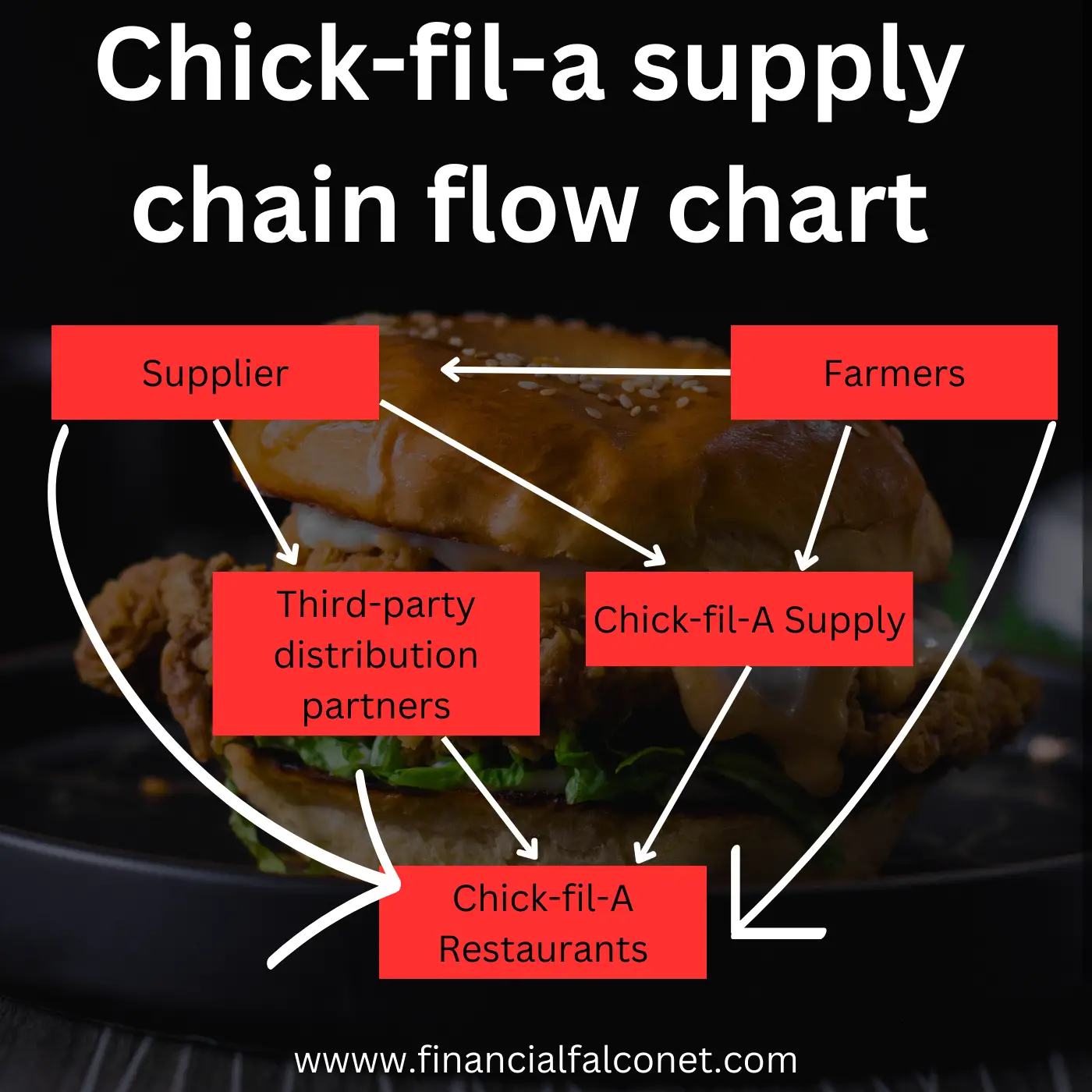
See also: IKEA Supply Chain Problems and Issues
Chick-fil-A supply chain issues
- Item shortages
- Changes in consumer preferences
- Labor shortage
- Sustainability and ethical sourcing
- Warehousing and logistics
Item shortages
Item shortages have been one of the top supply chain issues faced by Chick-fil-A. Sometime in 2018, a few Chick-fil-A restaurants had to temporarily close due to a lack of chicken. The shortage was reportedly due to the inability of the chicken supplier to meet up with supply.
Recent item shortages have been attributed to the global supply chain disruptions caused by the Covid-19 pandemic which slowed the production and distribution of items.
Most customers of Chick-fil-A commend the sauces they get alongside their meals such as Chicken nuggets or strips. Thus, when some of the brand’s restaurants started restricting the number of sauces served to customers per meal in May 2021, a lot of customers were not pleased.
Some outlets also experienced a short supply of single-serve ketchup packs within the same period. The restriction in the number of sauces and the unavailability of the ketchup was due to the supply chain issues that the brand was experiencing at that time.
Chick-fil-A has tackled this supply chain issue and customers can now enjoy their meals with different custom Chick-fil-A sauces or ketchup.
Changes in consumer preferences
Changes in consumer preferences are one of the supply chain issues faced by Chick-fil-A. Since customers are an integral part of the supply chain, any change in consumer behavior will definitely impact the brand either positively or negatively.
For instance, if more consumers patronize the brand, it will result in more sales which will impact the brand positively by increasing its sales revenue. On the other hand, if consumers boycott the brand, sales will decrease thereby negatively impacting the brand’s overall revenue.
Consumer preferences have kept evolving over time. One example is people preferring restaurants that provide excellent service within the shortest possible time. They may also seek varied purchasing options and dining experiences such as ordering online, drive-thru pick-up, home delivery, etc.
As consumer preferences keep evolving, Chick-fil-A has continuously reinvented its brand operations to be up-to-date in meeting and exceeding consumer expectations.
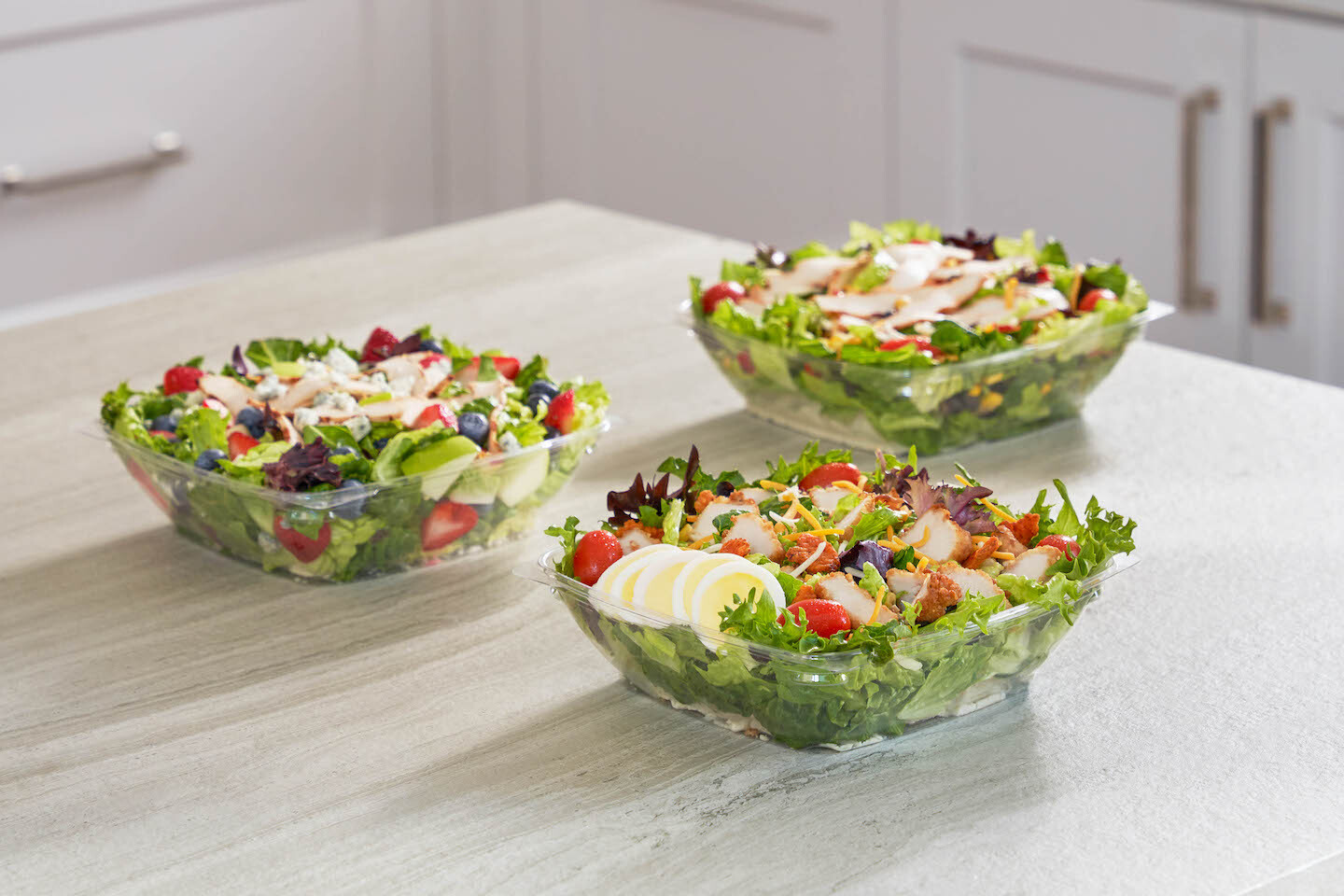
The brand’s policy of having franchise owners operating only one restaurant has been helpful in ensuring that these owners are fully involved in the day-to-day running of their restaurants. This affords them the opportunity to easily identify areas of improvement quicker.
Chick-fil-A’s One App is an innovative online ordering platform that allows customers to order takeout from the comfort of their homes, offices, or other places without physically visiting the restaurant. They can also get their order delivered through Chick-fil-A Delivery or any of the brand’s third-party partners such as DoorDash, Uber Eats, and Grubhub.
The strategic positioning of Chick-fil-A in malls, community centers, campuses, and neighborhoods puts the brand within close proximity of a large number of individuals which encourages higher patronage. Additionally, having different restaurant styles such as dine-ins and drive-thru also expands the available options for people.
The brand’s active engagement with consumers on several social media platforms such as Facebook has also been a useful tool for getting consumer feedback which the brand can use to improve its service.
For instance, in June 2023, the brand introduced a menu customization option where people can add or remove specific ingredients from a meal they want to order. This shows that the brand is willing to evolve with its customers and provide them with the exact kind of meals they desire.
Chick-fil-A has also included some vegetarian-friendly menu options such as waffle potato fries, hashbrowns, and fruit cups. They also have special meals for kids such as grilled nuggets and strips. All these are aimed at customer satisfaction and serving consumers in the best way possible.
Labor shortage
Labor shortage is another supply chain issue that has negatively impacted the operations of Chick-fil-A. Labor is a key component for the successful operation of any business especially when it comes to the quick service industry where workers interface with thousands of consumers daily.
The labor shortage can be traced back to the shutting down of economic activities as a means of curtailing the spread of Covid-19. The Washington Post reports that the ongoing labor shortage in the United States is a result of the switch of a significant number of individuals from service work to other industries which has been mainly engineered by the quest for better pay and remote work.
Due to the labor shortage, some Chick-fil-A restaurants were closed down temporarily while others stopped in-restaurant dining and only offered takeout or online orders. The change in operation became necessary to avoid burnout of the available staff while serving the increasing number of consumers after COVID-related restrictions were removed and people got back to dining out.
Sustainability and ethical sourcing
Sustainability and ethical sourcing are key supply chain issues, especially with the increasing rate of climate change as well as the steady depletion of natural resources.
Some key sustainability and ethical sourcing concerns include the sustainable use of water, animal welfare, energy usage, farmer’s welfare, food waste, sustainable packaging materials, etc.
Chick-fil-A has various initiatives in place which are aimed at tackling these issues. For instance, the brand has been committed to having the chickens used in its meals raised in compliance with Animal Wellbeing Standards such as being raised in temperature, ventilation, and lighting-controlled barns; Protected from adverse weather and predators; Having full access to feed and water; And raised with proper nutrition.
The brand has also worked for over 4 years with suppliers, an independent lab, and a third-party validator to provide customers with innovative packaging products that do not contain PFAS by the end of the 2022 summer. This move was necessitated by the need to use more sustainable materials in serving customers and meeting all applicable regulatory standards.
In May 2023, the brand introduced a recyclable double-wall paper cup to replace PET plastic cups and single-wall paper cups. The new cup offered the advantage of keeping drinks chilled for a longer period. It is also made from paper which is sourced from certified sustainably managed forests (SFI).
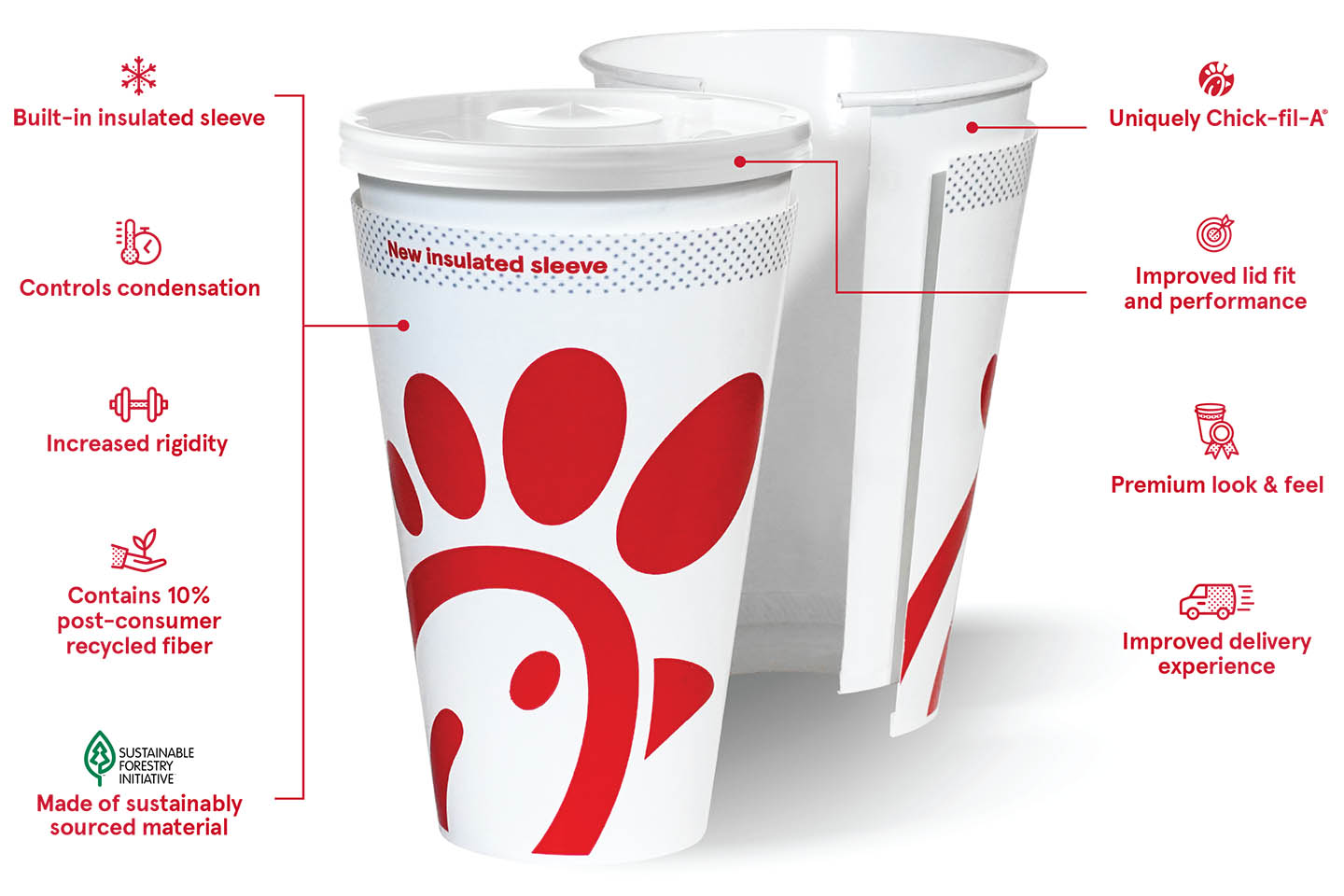
Beginning in June 2022, Chick-fil-A began repurposing its waste cooking oil into bio-diesel which can be used by trucks. This was made possible through a partnership with Darling Ingredients, a global company that reduces food waste by collecting and repurposing animal-based co-products and other natural materials.
These are important steps in Chick-fil-A’s ongoing journey of offering the best food, packaging, and overall experience to its customers while driving for the sustainable and ethical use of resources.
Warehousing and logistics
The rising prices for warehousing mean that the price of the final products that get to the consumer may have to be increased to meet the expensive costs.
The inefficient operation of some logistics companies can pose an additional challenge for restaurant chains. One clear example of how inefficient logistics has posed a challenge for Chick-fil-A was the unavailability of Chicken at some of its restaurants in 2018 which led to store closure.
In order to mitigate these challenges and ensure the optimum functioning of its supply chain, the company created a subsidiary, Chick-fil-A Supply in 2019 which could handle its warehousing and logistics needs.
The creation of this subsidiary enabled the company to have more control over the warehousing and logistics of food ingredients and other supplies that were needed for the running and operation of its restaurants.
See also: Kroger Supply Chain Issues and Management
Conclusion
Chick-fil-A has set up several supply chain management strategies to mitigate most of the issues that can affect the smooth running of its supply chain process.
This includes being actively involved in the supply chain process, engaging suppliers through supplier business reviews, and ensuring that all issues that arise are adequately tackled so that they do not negatively affect the brand’s overall performance.
Although most businesses get negatively affected during periods of economic downturns, Chick-fil-A has shown resilience and the ability to thrive during such periods due to its effective handling of its supply chain process and ability to replicate such efficiency in other instances.
The mayor of Mount Pleasant, South Carolina, attested to how a Chick-fil-A manager, Jerry Walkowiak, was able to assist them in transforming traffic jams and reducing the waiting time at a drive-thru COVID-19 vaccination clinic based on his experience.
Blessing's experience lies in business, finance, literature, and marketing. She enjoys writing or editing in these fields, reflecting her experiences and expertise in all the content that she writes.
